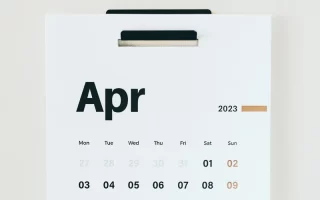On April 28, 2025, Republican Congressman Tim Walberg, the Chair of the House Education Committee, introduced a proposal called the Student Success and Taxpayer Savings Plan. This plan aims to simplify the student loan repayment process by reducing the current 12 repayment options to just two.
The first option is a fixed payment plan known as the Standard Repayment Plan, which lasts between 10 to 25 years, depending on the amount borrowed. The second option is the Repayment Assistance Plan (RAP), an income-driven repayment plan.
Under RAP, borrowers will start with a minimum monthly payment of $10, even if they are unemployed. The payment amount is tiered based on income: it begins at 1% for those earning between $10,000 and $20,000 and increases by 1% for every additional $10,000 earned, capping at 10% for incomes over $100,000.
For borrowers who make timely payments but whose payments do not cover the interest, the interest will be waived up to $50. After 360 monthly payments (30 years), if the debt is not fully repaid, the remaining balance will be discharged.
House Republicans believe this plan will lead to quicker and more reliable repayment of student loans while reducing the need for student loan forgiveness. Their goal is to eliminate student loan forgiveness programs, which they argue shift the financial burden of tuition onto taxpayers.
What’s The Difference With The Current Systems In Place
Under the current student loan system, unpaid balances are canceled after 20 to 25 years, depending on the repayment plan (SAVE, PAYE, IBR, and ICR) and level of the degree pursued. The new proposal extends this cancellation period to 30 years, which aims to reduce the financial burden on taxpayers related to student loans.
The proposed Repayment Assistance Plan (RAP) provides extra support for borrowers who are facing financial difficulties. If a borrower’s calculated payment does not cover the accruing interest, the remaining interest will be waived. Additionally, the government will match the borrower’s payment up to $50 to help reduce the principal balance if the borrower always pays on time.
Currently, if your monthly payment is not enough to cover the interest, the unpaid interest is added to your loan balance, resulting in negative amortization. For instance, if your loan’s monthly interest is $150 and you can only pay $50, that $50 will go toward the interest, leaving $100 unpaid. This unpaid interest would typically increase your total loan amount. However, under the new plan, that $100 will be waived, and the government will also reduce your principal loan by $50.
Furthermore, the existing options for unemployment deferments and economic hardship will be replaced with limited forbearance options. With forbearance, borrowers can pause their payments for up to nine months, with the ability to renew this option every two years.
How RAP Calculates Monthly Payments
To explain how monthly payments are determined under the Repayment Assistance Program, let’s look at an example:
- Income Calculation: If your annual income is around $60,000, your monthly income would be approximately $5,000.
- Payment Amount: Under RAP, you are required to pay 5% of your monthly income towards your student loan. In this case, 5% of $5,000 equals $250.
- Loan Duration: If your total student loan debt is about $30,000 (including interest), you can expect to pay off the loan in roughly 120 months, which is about 10 years.
Meanwhile, if your monthly interest on the loan is $450 and you make your payment on time, your $250 payment will first be applied to the interest. This means that after applying your payment, you will have $200 remaining in interest ($450 monthly interest minus your $250 payment).
Fortunately, this remaining $200 in interest will be waived and will not accrue. Additionally, the government will reduce your principal by a maximum of $50.
What Does The Proposed Repayment Scheme Means To People
If this proposal is approved, it will alleviate the financial burden of student loan forgiveness on the American public. With a 30-year timeline before cancellation, borrowers will have more time to repay their debts.
The scheme encourages timely payments, even for those who are struggling, by providing government assistance of up to $50 a month to help with interest payments. This support increases borrowers’ chances of paying off their loans more quickly, reducing their reliance on complete student loan forgiveness.
Additionally, the proposed income-driven repayment plan simplifies the repayment calculation process. Unlike the current SAVE plan, which can be complicated due to factors like poverty guidelines, educational level, and family size, the new scheme aims to make understanding monthly payments much easier for borrowers.
Key Points
- Simplification of Repayment Options: The proposal aims to reduce the current 12 student loan repayment options to just two: a fixed Standard Repayment Plan lasting 10 to 25 years and an income-driven Repayment Assistance Plan (RAP).
- Income-Driven Payments: Under RAP, borrowers will start with a minimum monthly payment of $10, regardless of unemployment. Payments are tiered based on income, starting at 1% for those earning between $10,000 and $20,000 and capping at 10% for incomes over $100,000.
- Interest Waiver and Principal Reduction: If borrowers make timely payments that do not cover the interest, the remaining interest will be waived up to $50, and the government will also reduce the principal balance for those who consistently pay on time.
- Extended Cancellation Period: The proposal extends the loan cancellation period to 30 years, which is longer than the current 20 to 25 years, aiming to lessen the financial burden on taxpayers related to student loans.
- Simplified Payment Calculations: The new income-driven repayment plan is designed to be easier to understand compared to the current system, which can be complex due to various factors like poverty guidelines and family size, making it more accessible for borrowers.
Sources
- Photo: Unsplash: Tim Gouw
- House.Gov: Chairman Walberg Unveils Reconciliation Bill: Student Success And Taxpayer Savings Plan
- American Enterprise Institute: House Republicans’ Proposed Repayment Plan Fixes Vexing Student Loan Problem
- House.Gov: Reconciliation Bill Summary
- Forbes: Repayment Assistance Plan Explained: Huge Update For 40 Million Borrowers On Republican Student Loan Plan
- Business Insider: The New GOP Plan For Student-Loan Borrowers: Longer Repayment Periods And Fewer Options For Debt Relief
- Consumer Financial Protection Bureau: Student Loan Forgiveness





